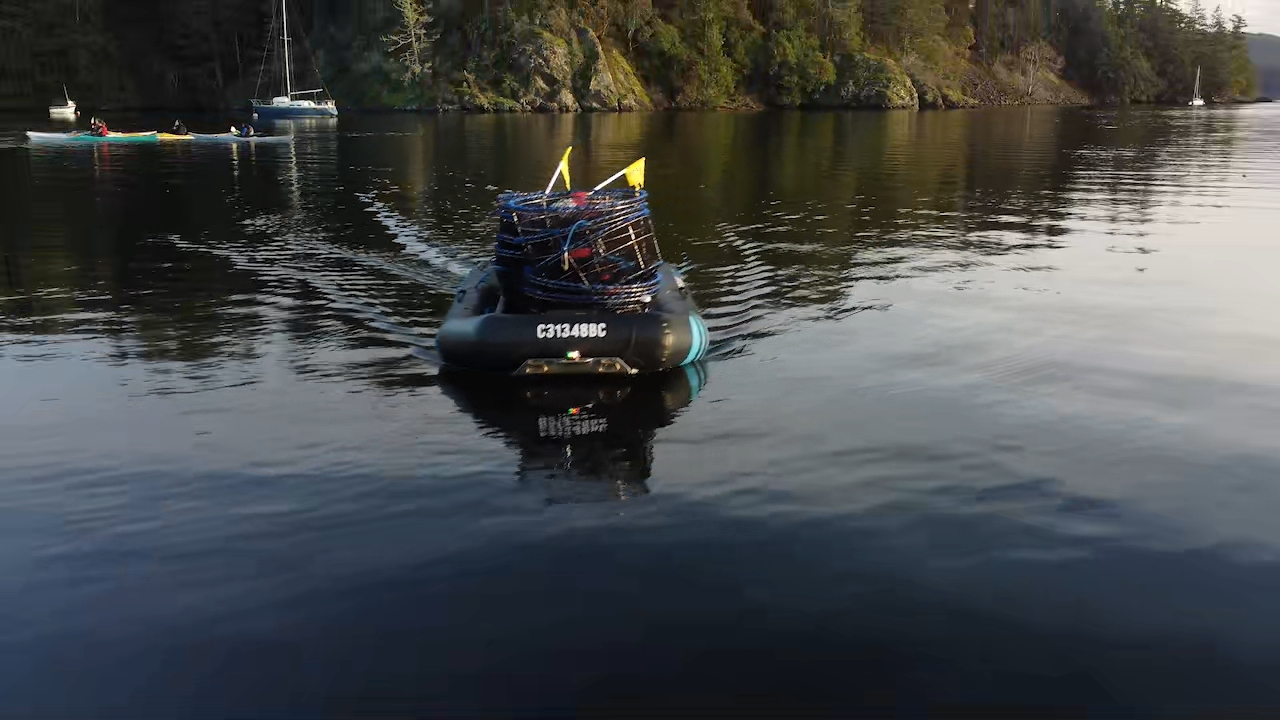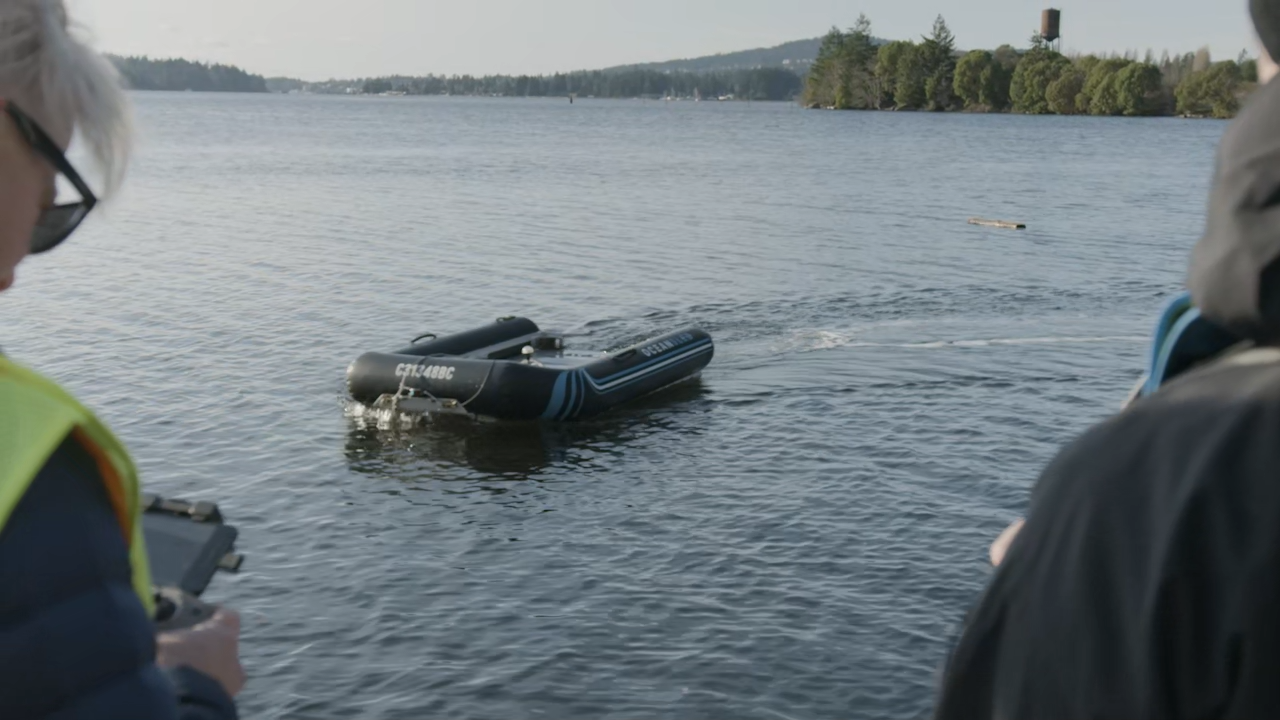Remote, coastal, and Indigenous communities are particularly vulnerable to spills, vessel discharges, and other marine incidents.
Vulnerability is defined as the susceptibility of a system to a specific hazard. It can also be considered the risks a system faces when negatively affected by specific disturbances. The term also refers to potential loss or damage at either the individual or societal level. There are different vulnerability types: physical, social, economic, and environmental. For some communities, all can apply when a spill or major incident occurs. With potential implications on livelihoods, health, and the environment due to dependence on the water and potential delays in response due to location and proximity to responders, it’s important for communities to have the tools needed to mitigate the impact.
Through a Canada’s Ocean Supercluster (OSC) project launched in 2022, a group of companies and First Nations communities have come together to develop a technology to provide coastal, Indigenous, and remote communities a cost-effective rapid response package, including a mobile command, control and communications system, data analysis tool and mobile incident platform for marine emergencies.
In the Coastal Incident Management System (CIMS) project, led from Nanaimo, BC, Shift Environmental is working with a pan-Canadian team including T’Sou-ke Nation, Saab Technologies, BlueNode, the Canadian Coast Guard, Western Canada Marine Response Corporation (WCMRC), and Center for Ocean Applied Sustainable Technologies (COAST) to develop the integrated system.

Testing technology for the Coastal Incident Management System Project in Nanaimo, BC. (Image credit: Canada’s Ocean Supercluster)
This new capability addresses outdated domain awareness and communications technologies to prepare for, respond to, and recover from marine oil spill hazards and other environmental emergencies. When put in the capable hands of Indigenous coastal communities, who have multi-generational mariner skills, as well as deep knowledge of their territory, its resources, and their vulnerabilities, the Coastal Incident Management System capability will transform elements of Canada’s Marine Oil Spill Preparedness and Response Regime.
“Isolated coastal communities are often the most vulnerable to marine spills and vessel discharges. Capabilities such as CIMS provide a cost-effective solution, putting immediate response capabilities into the skilled hands of those who need it most,” said T’Sou-ke Nation. “T’Sou-ke Nation and the project partners look forward to demonstrating CIMS as a locally owned, operated, and maintained solution to Canadian communities from coast to coast to coast and to vulnerable communities around the world.”
The packaged solution created by the CIMS Project includes state-of-the-art communications software and hardware; novel response equipment, procedures, and training; and uncrewed surface vessel and aerial vehicle designs for spill detection, immediate response, and persistent monitoring. This package will address marine emergency incident command and response’s two critical gaps: sense-making and communication between responders; and timely spill assessment and response capability in remote and nearshore locations globally.
Fostering Indigenous Participation
The Two-Eyed Seeing Initiative was launched by Canada’s Ocean Supercluster in late 2022 and is designed to increase meaningful Indigenous participation in Canada’s ocean economy. This initiative engages with Indigenous organizations and communities to foster greater inclusion and participation in OSC projects and activities and build direct and meaningful partnerships.
Two-Eyed Seeing is a concept developed by Mi’kmaw Elder Albert Marshall in 2004 which seeks to reconcile the use of Western methods and theory with Indigenous knowledge. In the words of Marshall, Two-Eyed Seeing is “learning to see from one eye with the strengths of Indigenous knowledge and ways of knowing, and from the other eye with the strengths of mainstream knowledge and Western ways of knowing and learning to use both of these eyes together in order to produce more fulsome and sustainable solutions for the benefit of all.”

Testing technology for the Coastal Incident Management System Project in Nanaimo, BC. (Image credit: Canada’s Ocean Supercluster)
Indigenous Peoples have unique perspectives and relationships with water. Canada’s three oceans have been their homes and have played an important role in sustaining and defining them. Many Indigenous communities have a heightened knowledge of the ocean, the interrelationships between marine species, and their ecosystems.
Note: There is no one Indigenous worldview. There are First Nations, Inuit, and Metis, each with its own unique culture and worldview.
Through the partnership with SOAR Professional Services, along with their partnering companies Dillon Consulting Limited, and Indigrow Business Management, the OSC is implementing transformative measures across the organization and, in turn, the ocean economy. With the Two-Eyed Seeing initiative, the OSC hopes to see more projects that bring together private, public, and Indigenous organizations and communities to create mutually beneficial ocean projects.
With the transformative growth we’re seeing and expecting from Canada’s ocean economy, it has never been more important to balance ocean health and productivity into a single priority, and as we look to sustainability models, we must use both eyes.
At Canada’s Ocean Supercluster, we know fostering collaboration with different ideas, insights, and experiences fuels innovation and improves outcomes. Incorporating Two-Eyed Seeing and encouraging more Indigenous-non-Indigenous partnerships will help break down barriers, empower communities, and contribute to a healthier and more productive ocean.
To discover more about Canada’s Ocean Supercluster, visit: https://oceansupercluster.ca/
This feature appeared in Environment, Coastal & Offshore (ECO) Magazine's 2023 Summer edition Bio-Resilient Coasts, to read more access the magazine here.





